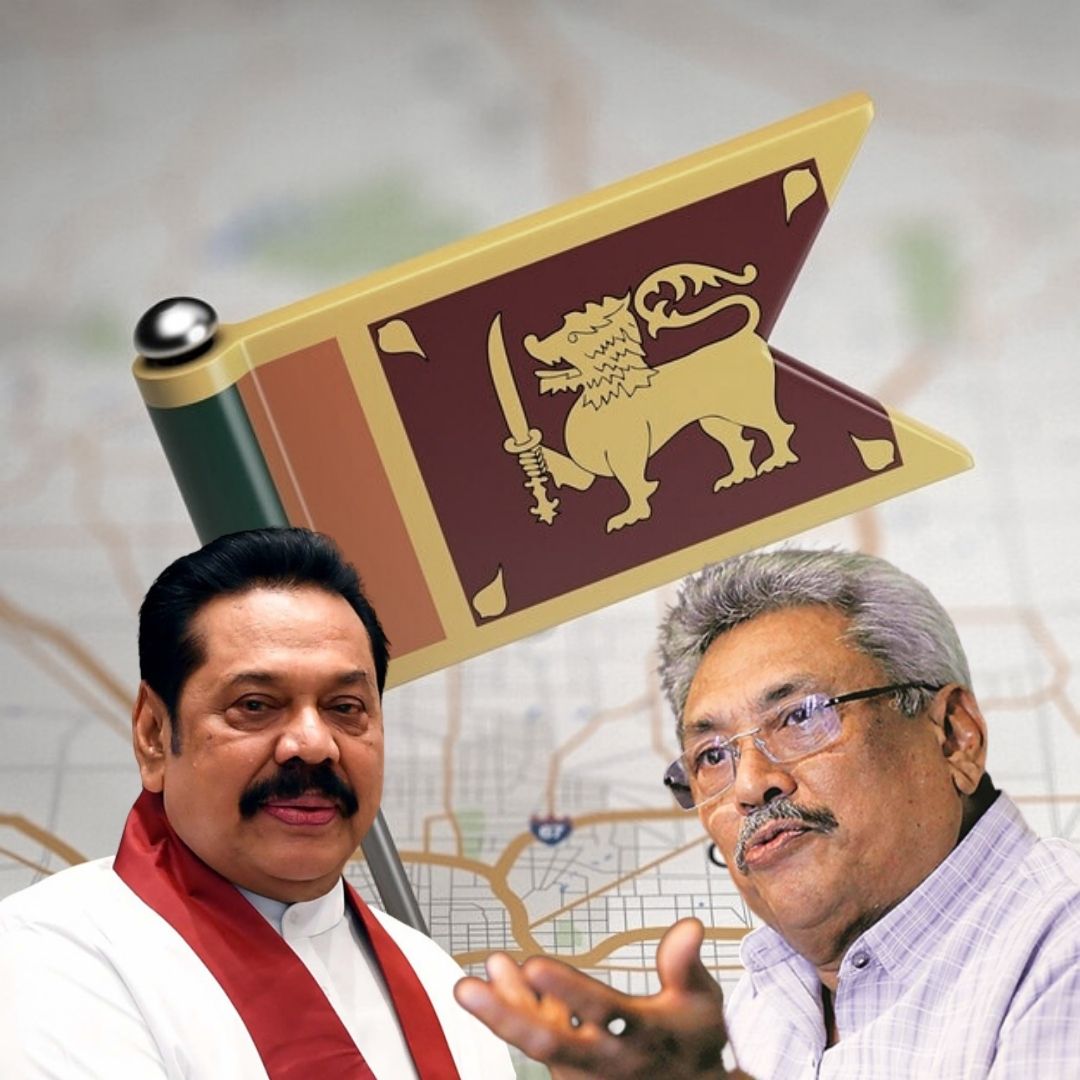
Image Credit: Wikipedia, The Indian Express, Facebook
Sri Lanka: What Lessons Does Island Nation's Worst Economic Crisis Hold For The World?
Others/World, 17 April 2022 11:32 AM GMT
Editor : Shiva Chaudhary |
A post-graduate in Journalism and Mass Communication with relevant skills, specialising in content editing & writing. I believe in the precise dissemination of information based on facts to the public.
Creatives : Ratika Rana
Her primary objective is to inform, promote, educate and cultivate readers through writing.
The Sri Lankan economy experienced a 'twin crisis' as other countries started on the path of economic recovery from the pandemic. The heavy burden of a combined balance of payment and sovereign debt crisis crippled the country in the worst possible manner.
The South Asian countries are facing a hard time getting back on their feet in recent months. Afghanistan, Pakistan, Myanmar, China, and now Sri Lanka is fighting their own battles to maintain their image on the global stage. Simmering anger amongst the public against Gotabaya Rajapaksa has pushed people to take to the streets.
A severe shortage of funds makes it impossible for the government to import essential goods from the country. The country's currency devalued massively in the last month, and proposals for financial assistance from the International Monetary Fund (IMF) made the news.
Cause Of The Economic Downfall
Experts believe that the country's economic downfall results from compounding mismanagement of funds by succeeding governments and has led the island nation into a twin crisis of a budget shortfall and a rising current account deficit. A working paper by the Philippines based Asian Development Bank (ADB) quoted, "Twin deficits signal that a country's national expenditure exceeds its national income. Its production of tradable goods and services is inadequate".
However, the current economic crisis is the result of the high promises of the Rajapaksa clan, which assured the citizens of deep tax cuts in the 2019 electoral campaign. The tax cuts further reduced the country's income as the COVID crisis had paralyzed the tourism sector.
FDI Dropped By 70 Per Cent
The country's income suffered greatly after several nations closed their borders. The tourism industry provided for more than 12 per cent of the country's gross domestic product. As the foreign remittances witnessed a downward graph, several credit-rating agencies downgraded Sri Lanka's financial capabilities, leading to international markets blocking the country. The debt management system of the Government depended heavily on the ability to access the markets. The foreign exchange reserves in the country reduced by more than 70 per cent in the last two years.
Moreover, the Rajapaksa government announced the ban on chemical fertilizers, later reversed. However, rice production in the country was already affected by the ban. IMF said that the public debt had reached 'unsustainable levels'. As of February 2022, the foreign reserves in the country amounted to only $2.41 billion, whereas the debt repayments amounted to over $4 billion.
The impending crisis had convinced the opposition leaders to push the Rajapaksa government to look toward the IMF for monetary help. However, experts and the government in power continued to avoid the call. However, the Russia-Ukraine crisis began, and the fuel prices across the borders shot up, pushing the government to seek help from the IMF by April 2022. People stand in long queues to avail essential groups as the prices soar. Another wrong step in the crisis was when Sri Lanka deeply devalued its currency, worsening public concern.
Lessons For Other Countries
However, the ongoing crisis in a democracy has left several lessons for countries to learn from. First and foremost, the world must understand that ethnoreligious nationalism is no substitute for good governance and prudence in a country. For decades, the Sri Lankan military has been credited with being one of the most stable militaries globally; however, in recent times, the army has been tasked to take care of the 'green agriculture' in the country. One would wonder how the heavy artillery and infantry would function when charged to ensure organic farming in the country.
Secondly, the country should have understood well in time that military forces are not the answer to every problem.
The first and most negative decision the government took in December 2019 was to slash and roll back the tax increases that its predecessor Administration had painfully introduced. This country has an extremely narrow tax base and meagre tax revenue to GDP ratio compared with peer nations. Today, we are going hand in hand to Bangladesh for foreign currency and swap arrangements. After that, the Government announced a ban on importing fertilizers into the country. The move, perhaps, was intended to either promote organic farming or save some dollars. However, the ban did not sit well with the farmers, and food prices immediately shot up.
The lack of fuel, milk, power, cooking gas, medicines and essential food items keeps mounting as the economic crisis worsens in the country. Another deal of importing organic fertilizers from a Chinese company opened another world of problems for the country. Over 10 per cent of Sri Lanka's foreign debt woes are to be paid to China.
The world's assistance to Sri Lanka's monetary woes remains visible, and India has acted as the big brother and facilitated Sri Lanka with a credit line worth $1 billion. The ruling party in Sri Lanka, Podujana Peramuna (SLPP), lost its majority in the Parliament. Yet, the stiff Rajapaksa denied to put up his resignation but said that he agreed to hand over the chair to any party that secured more than 113 seats in the Parliament. The Lankan economy needs a robust pathway to economic recovery by fiscal consolidation. Reforms must focus on strengthening VAT, income and corporate taxes through gradual rate increases and base-broadening measures.
Political Lessons For Indians
Even though the Sri Lankan economic crisis is not likely to drastically impact the Indian economy, there are several political lessons Indians should imbibe. A majoritarian government led by a boisterous leader who announces populist measures through a low-growth cycle will likely have a negative macroeconomic impact. Sri Lanka's inability to control the soaring prices and failure to offer jobs to the youth pushed the youngsters to take to the streets to protest against the economic crisis. India's job crisis and unemployment rates are also concerning, with the Central Bank of the country trying its level best to contain consumer prices.
Both India and Sri Lanka have different social, economic and geographical conditions, yet the idea is to compare like with like. Irrespective of the size of the country, the social policy in a democracy often makes or breaks it. Centralized ad hoc policy measures, cutting taxes for populist reasons (before the pandemic), inability to collect estimated revenue for Government's spending needs, seeing a rise in government debt, offering limited autonomy to the central bank for targeting inflation might bear a resemblance to India, and therefore offer some wise lessons for the neighbouring nation.
Also Read: Jharkhand Ropeway Tragedy Highlights The Many Lapses Of Safety Standards In India
 All section
All section














